Lynne Ramsay interview: You Were Never Really Here
We talk to the great Lynne Ramsay about her filmmaking style, working with Joaquin Phoenix, and more...
One of the UK’s finest living filmmakers? Undoubtedly. You Were Never Really Here, released in cinemas earlier this year, exemplifies Lynne Ramsay’s electrifying style: the atmosphere, the tension, the overwhelming sense that every shot means something – that nothing is wasted.
Featuring Joaquin Phoenix in a fearsome central performance as a hired killer named Joe, You Were Never Really Here is a modern take on the noir thriller. But rather than give us a rote tour of a familiar genre, Ramsay turns it into a character study of a lonely, troubled man haunted by his own memories – memories that come flooding back in jagged flashes of trauma.
It’s a terrific, disturbing movie, but then, all of Ramsay’s work is made with a similarly uncompromising eye. We Need To Talk About Kevin (2011) is a kind of domestic horror about a guilt-stricken mother (Tilda Swinton) thinking back on her sociopathic son’s childhood. Movern Callar (2002) is about an ordinary young woman (Samantha Morton) who becomes a successful novelist through morally questionable means. Ratcatcher (1999) is a bleakly captivating drama about a boy growing up on a Glasgow housing estate.
All of these movies show Ramsay’s ability to something magical and arresting in the everyday. The spectacular opening shot of Ratcatcher, for example, shows its young lead wrapped up in a net curtain; he slowly unwinds from the fabric in slow-motion, like a moth emerging from a chrysalis. Even in a film as ferocious as You Were Never Really Here, Ramsay finds beauty in a harsh landscape.
As her latest film arrives on Blu-ray, we caught up with Lynne Ramsay on the phone to talk about how she comes up with these extraordinary images. Here’s what she had to say…
You Were Never Really Here is an amazing film. You must be thrilled with the response to it. But does a good critical reception mean a lot to you, or is that something you try to block out?
Um, it’s a strange one, because obviously you want people to go and see the movie. And for people to have such strong reactions, that’s really fascinating. I was doing press for six months, so it was interesting how different people interpreted it. But yeah, once you’ve given birth to the movie, it’s time to think about the next one in a way, you know? So I’m writing right now. But I was thrilled, obviously. It’s the reactions, really – people are captivated by it, or not, but they generally seem to be positive. That’s a good thing.
Something a lot of people have commented on, which I found really powerful, is the sense of claustrophobia. That almost uncomfortable intimacy. Was that something you wanted to achieve from the beginning?
Things are always evolving. I think I wrote the first draft in about six weeks, or four weeks or something crazy. Then Joaquin [Phoenix] gets involved, then we’re doing prep… it’s very organic. I was trying to react to New York, the environment, and this amazing actor. The script was pretty tight, but you go on location, and the location tells you something different. I always gravitate towards that – and getting in close to a character, bringing the audience inside their world. So I think that was a natural progression, really. It’s just the way I do things – I don’t know how to explain it to people. [Chuckles]
So it was an organic process. We were prepping for six weeks before, just trying to figure it out together. That doesn’t always happen – sometimes you just show up a couple of days before. [Joaquin] is such a special guy, and I can’t imagine anyone else in it now. Or, I don’t know that I ever did – before I’d even written scene one, I had his photo on the table thinking, “He’s in it!”
We were trying to be quite economical with how we approached it, though, because we only had 29 days to shoot, which isn’t a lot. But even though we didn’t have a thing called soft prep, where you go on locations – we just went straight into it – I spoke to Paul Davies, the sound designer, really early on. I was also cutting things in prep to show Joe Bini [editor], like, “I’ve got an idea for the surveillance camera scene” and stuff like that. We did a test.
The real prep was in the script, in a way. And having good collaborators, too, just being on the ball with it, from the first draft onwards.

I remember reading an interview with Spike Jonze, because he worked with Joaquin Phoenix on Her. He was saying that Phoenix almost doesn’t act – he has to feel the reality of a scene. Having read that, I wonder how on earth you managed to create this dark, damaged character.
We spoke a lot. We tried to take away anything that felt a bit cliched. It’s based on quite pulpy, film-noir material – although really well written by Jonathan Ames – but how do we evolve it? How do we make it modern? It became more and more about this man’s world, you know? I think just having him there was like having the Joaquin Phoenix acting department and camera department – having him there for that intense prep was what made it. He really built his character, he was getting [physically] bigger. The way he walked – it was like he was becoming a beast in front of me, and I was reacting to that in the script.
It was just really exciting – probably the most terrifying and exhilarating film I’ve ever made. Just the speed and the ideas that were flowing – it was exciting. Plus it was boiling hot in New York, which was weird – New York in the summer is so crazy, I think that’s why everyone leaves. So shooting in those conditions… the film’s quite grimy, so I’d thought about shooting it in the autumn. But the summer suited the griminess – sometimes a film just tells you what it’s gonna be, you know?
Even the heat and the sweat – there’s real sweat in this film. You’d never get that unless you had these conditions. But that’s really about how deep [Joaquin] goes into things, and how deep I like to go into things. Even though we had a million things to do, he lived round the corner from me, so I’d be running round with my computer going, “I’ve got an idea” and he’d react to that. Then we’d be going round the locations, and they’d be literally a few doors down from me, so that was really helpful. But it was a pretty intense experience, and I think that went into the film somehow.
I love how this film and We Need To Talk About Kevin deal with memory – the way you weave memory and flashbacks into the narrative so smoothly. Is that something that cinema’s uniquely able to do?
I’m not a big fan of flashbacks, I’ve got to be honest. That might sound like a contradictory thing to say, but I am a fan of things that feel more sensual and evocative. It’s about piecing things together for me. In [You Were Never Really Here] you have elements of post-traumatic stress, but if you start going, “Here’s the backstory”, unless it’s done with real skill, it can feel like spoon-feeding the audience. I didn’t want to do that; I wanted to give the impression that this guy’s got broken glass in his head – shards rather than full explanations. Enough to piece things together about what happened to him.
We Need To Talk About Kevin, as an adaptation, was pretty major. It’s a long book, and it’s in letters, so it was a real editing experience to boil that down and make it cinematic. I learned a lot doing that film. All that experience with cutting has gone into my script work now; so you go, “You don’t need this, you don’t need this” – you can see things like an editor, which is really useful. Kevin was a monster of a script to pare back, you know? It was really tough to write that. It’s that experience that I gravitate towards – more impressionistic feelings of the path rather than explanations.
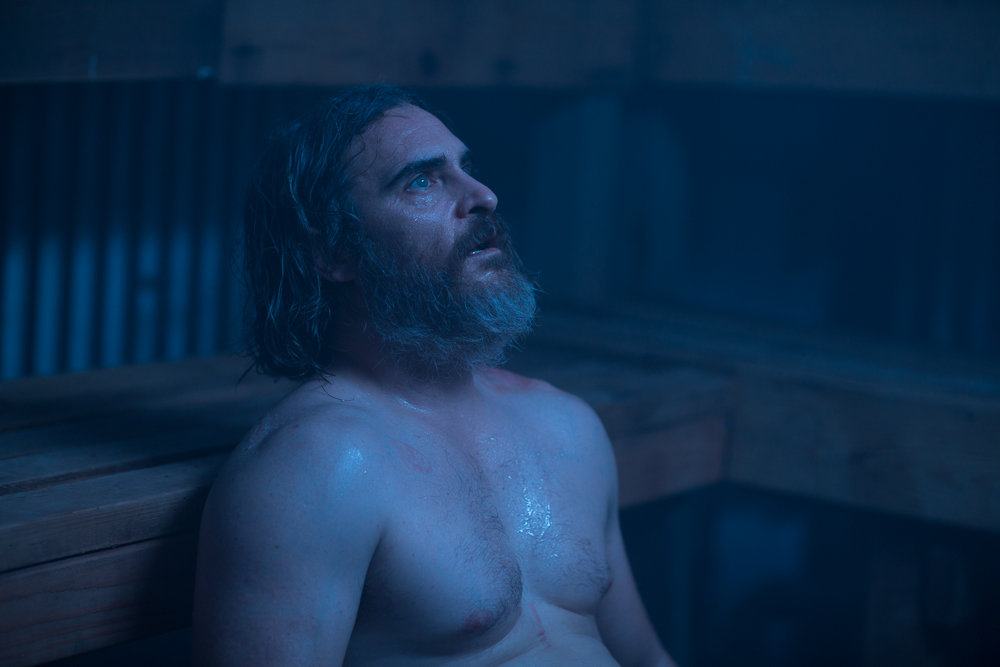
Absolutely.
You evoke things in the audience, and then you hope they can find their own way through it, even if they don’t have the full picture.
When I rewatched We Need To Talk About Kevin, I was thinking, just as a thought experiment, what it would be like if some reason you’d put a narration on it. And I think it would weaken it badly – it’s so much more powerful without one.
You often think whether it’s right to do that or not. But it’s trying to find it as a film, as a piece of cinema. I like voiceover when it’s in Badlands or something – that one was really interesting, because it’s actually not telling you [the story], it’s telling you about her thoughts. Scorsese’s wonderful at voiceovers, but the chance for me was to try to find a way into this guy’s head without using that. I can voiceovers can work really well, but they can also be really lazy. But the really brilliant ones I do appreciate.
Maybe someone should do a voiceover, a narrative for [We Need To Talk About Kevin]. That would be a laugh.
I could do it in my very dull, southern voice!
That could be really surreal and amazing. [Laughs]
One of the things I notice about all your films, including your short films, is how you can grab our attention with the opening shot. The opening shot always seems to say so much about what’s coming next and the tone. Do you pay a lot of thought to what the opening shot is, and if so, what is your philosophy for the perfect opening shot?
Well, that’s a hard one. The opening dictates the whole thing. I love writing openings, and I think that can give me the key to the movie. So somehow, that can be the easiest part, to be honest. So for me, the opening tells you the film; it’s giving you these hints of what the whole is. It’s hard to define, but you give hints of what the film is early on, and I write them pretty visually, you know?
The whole sequence is written exactly like [you see it]: the hotel, you don’t see his face, we’re creating a mystery. Who is this guy? Is he a killer? Is he a psycho? There’s a strange humour between he and his mum. It’s keeping you guessing, keeping the mystery up. Not knowing who he is was interesting to me.
But yeah, I enjoy openings, I’ve got to say. In my new film, I’m just happy with the opening. So yep, I’m gonna keep it up! [laughs]
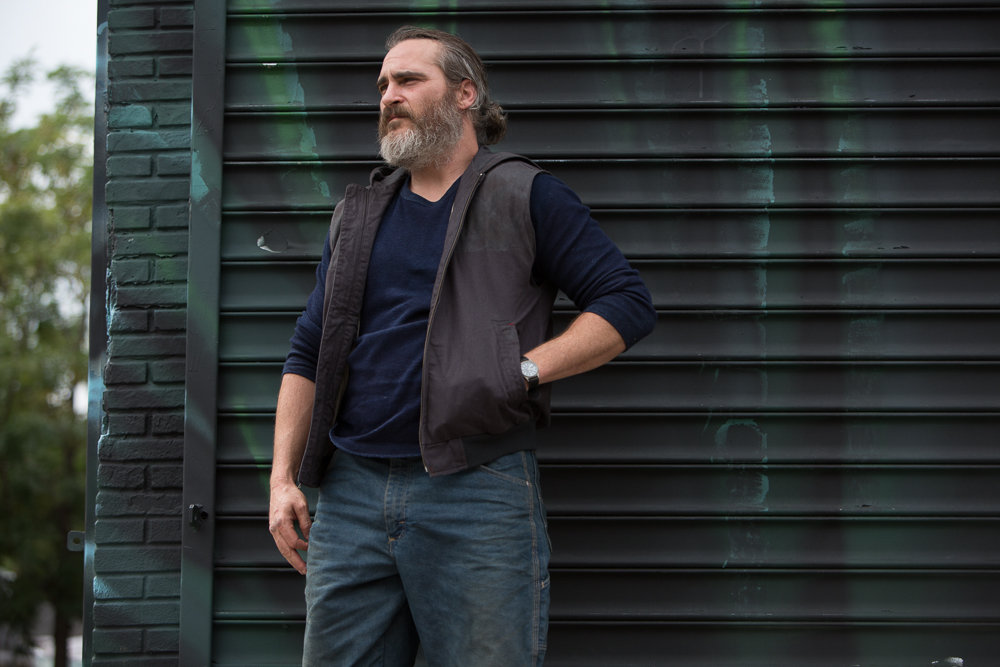
The one in We Need To Talk About Kevin is amazing. The tomato festival…
La Tomatina.
That’s it.
I shot that in about half a day. It was mental shooting that. Because Tilda [Swinton] went into the real festival. But that idea came from her past – the sense that she’s free, but also that it’s a portent, because it becomes all crazy, surreal and aggressive. So that’s the key to the film in a way: she regrets giving up her past, but there’s also the idea of some portent of horror to come.
I mean, they’re both horror films in a way. A different type of horror. But shooting that was incredible, because we actually went there; I think the producers were saying, “You can take that in New York” and I was like, “No way.” It would cost a fortune for a start, and I said to Tilda, “Do you want to do the real thing?” And she was like, “Yeah.” So we took a documentary crew out – Thomas Townend [the cinematographer] actually shot that, who shot You Were Never Really Here. He had a tiny crew. There was a Bollywood film that tried to get that scene at the festival and couldn’t do it, so we got the sweet spot! It was mental.
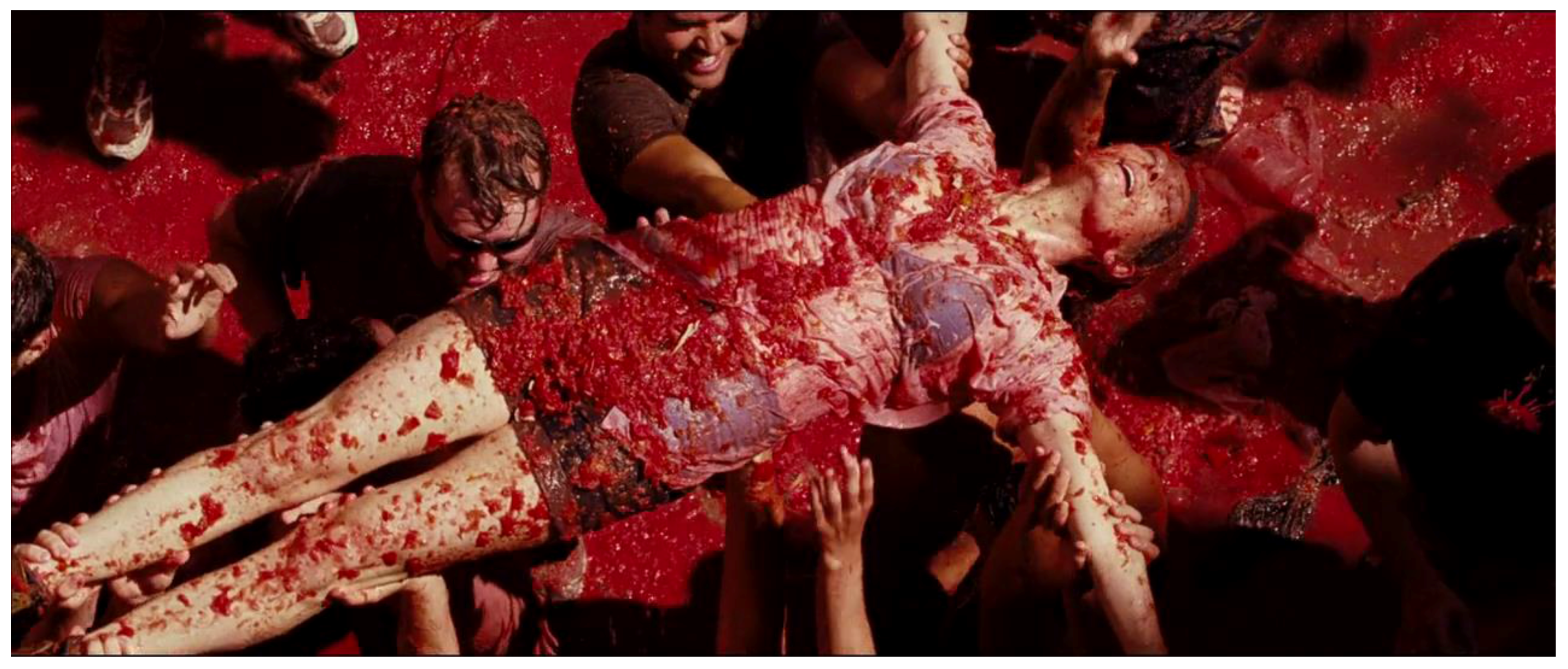
The first thing that happened was, like, there were tomatoes all over the camera, so it jammed. Tilda was getting pummelled by the crowd, because no one cares who you are there, you know? But she was cool and went with it. We only had an hour window to get it, because they start it and then it’s over quite quickly, and then they clean it all up. She was amongst about a thousand drunk people, probably! It was the most mental experience.
But then we learned that tomatoes are really nice for your skin when they’re crushed. [Laughs]
It must have been amazing though, when you looked back at the footage and saw it stretched in slow-motion. It looks mesmerising.
Yeah, yeah. It was one of those situations where it was a risky thing to do. We might not have got it – it was such a touch and go thing. Because every time we went to film something, we’d just get smacked against walls. But it was Tilda being up for that risk, and also knowing that the authenticity would be the best thing for the film. We were planning the shots as much as we could within a totally chaotic situation. But I love things like that.
In my short film, Gasman, I shot it at a kid’s party. And the kids were just having a party – they couldn’t care less about our film. But that was great because we got this amazing footage where kids were drinking soda and pop or whatever, and getting that sugar high and beating each other up or dancing.
I did it in Morvern Callar with the party scene – we just created a party and had Samantha Morton walk through it saying crazy things. It’s an exhilarating way to shoot, because there’s a factor of the unknown there which I quite like. But it’s risky.
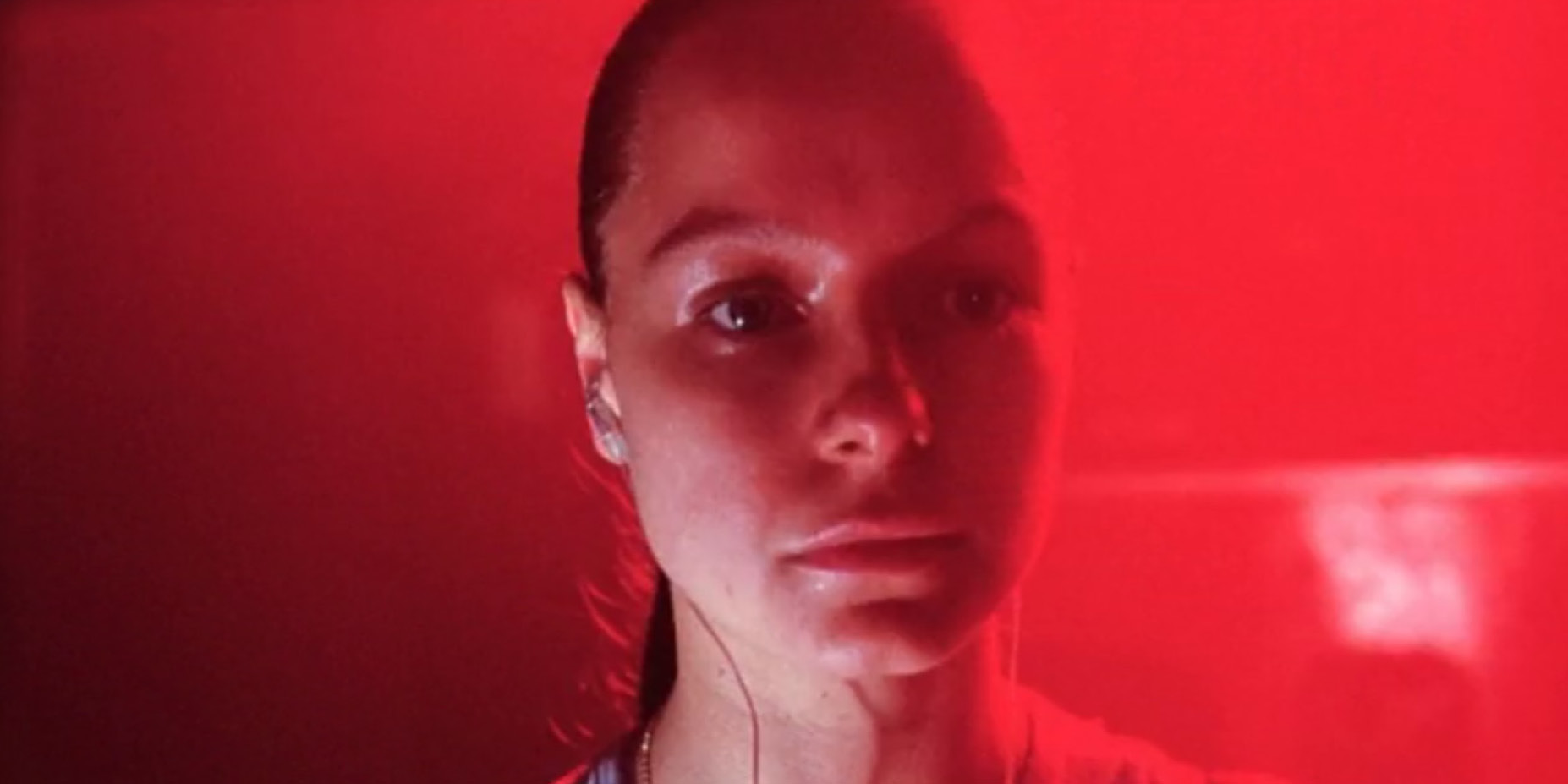
Is that the sweet spot for you, then, as a filmmaker – that fine line between chaos and discovery, and also the precision in your films. Your shots always feel precisely chosen.
This one, with the time frame being so tight, it was almost a puzzle or a chess game. Maybe we’d have something like 10 shots, and I was like, “How do we do it in three, or two?” We were testing ourselves to do that. So there’s a precision to the shots and stuff like that, but it all comes from the psychology of the character. Everything’s interlinked. But at the same time, you can’t be like, “Hey, this is my great script,” and not want to deviate from it.
I wrote Ratcatcher for the hottest summer, and all it did was fucking rain – excuse my French – the whole time. It was like, “Oh my god.” Then I thought, “You know what, it’s going to be that kind of movie.” And it’s very much reacting the location – you were talking about the claustrophobia, [the location] gives you ideas. With Joaquin, he never does the same thing twice, you know? Then again, it was normally first takes, but if we did do second takes, they’d have a different flavour. Some were terrifying, some were funny.
I hate sets that are like, we’re just getting the material, blah blah. It’s always thinking what’s beyond, how we can do something better or more interesting. How to challenge yourself. This was a challenging movie because of the timeframe, but we tried to see that as a positive thing rather than be overwhelmed by that.
Sometimes you get the best ideas when you’ve got a gun to your head. Where you’re running out of time, you have these brainwave moments. It’s allowing the space to have them, even in an incredibly tight situation.
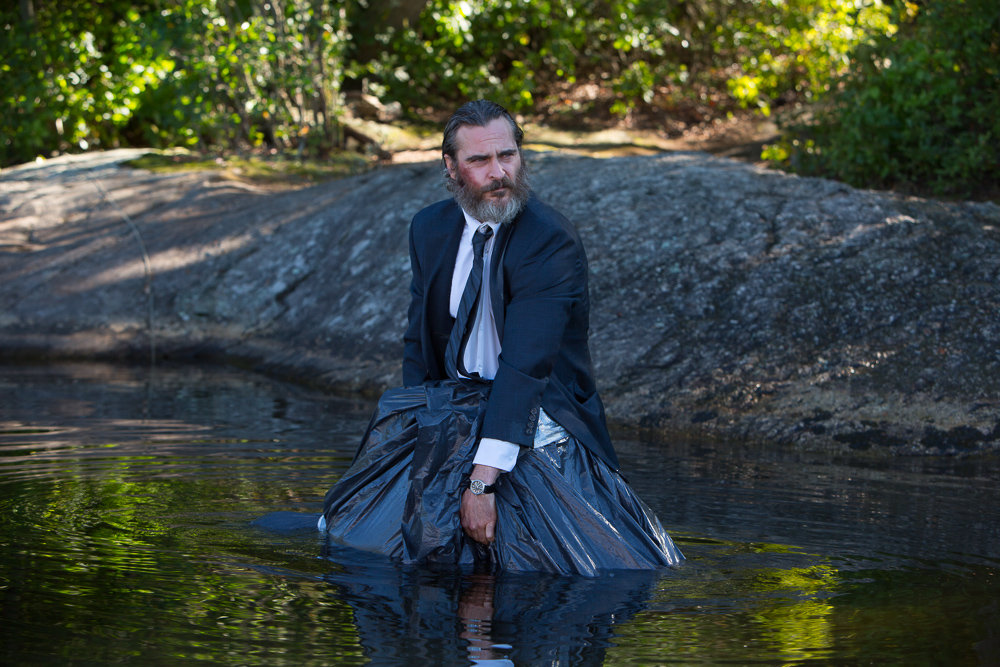
Like you said, they both feel like horror films in a way. And they’re kind of companion pieces to each other. Is horror a genre that interests you, just in general?
I didn’t intend to, and I don’t think they’re conventional horror films, but I suppose they have a horror of violence in some way. And a horror of “what if” – in We Need To Talk About Kevin, there’s the “what if you have a son and don’t feel those feelings”. Another thing is that it could be Kevin’s story, which is interesting too – how she felt about him. Both films are about modern violence in a way, so they’re horror in one way and not in another. There was no major plan, but I guess, looking at the world – I watch a lot of documentary films – it’s a weird time at the moment, and just having some sort of meditation of what all this means is interesting.
So you said you’re writing your next film now. Can you talk about that a little bit?
It’s pretty under wraps to be honest, but I’m about eight pages into a feature film that I think could be interesting – I can’t compare it to anything else. I don’t know exactly what it is. It’s like nothing I’ve ever done.
Are you still doing the Moby Dick in space movie?
Well, funnily enough I’m going to Nantucket in a few weeks, which is where it was written. I’ve been talking to Jonny Greenwood about [the music]. But I’m really interested in making a sci-fi film – there are some projects that I end up meditating on for quite a few years, and then they start to come together. But I did a little trailer for myself, with some music and stuff.
It’s been on the backburner for a while, but it’s definitely something that interests me. I think some of Moby Dick went into this film: Captain Ahab is fighting against his impotence because he’s a middle aged guy? He wants revenge in a certain way for something he can’t understand. So elements of that are in You Were Never Really Here I think.
Lynne Ramsay, thank you very much.
You Were Never Really Here is out on DVD and Blu-ray on the 2nd July in the UK.